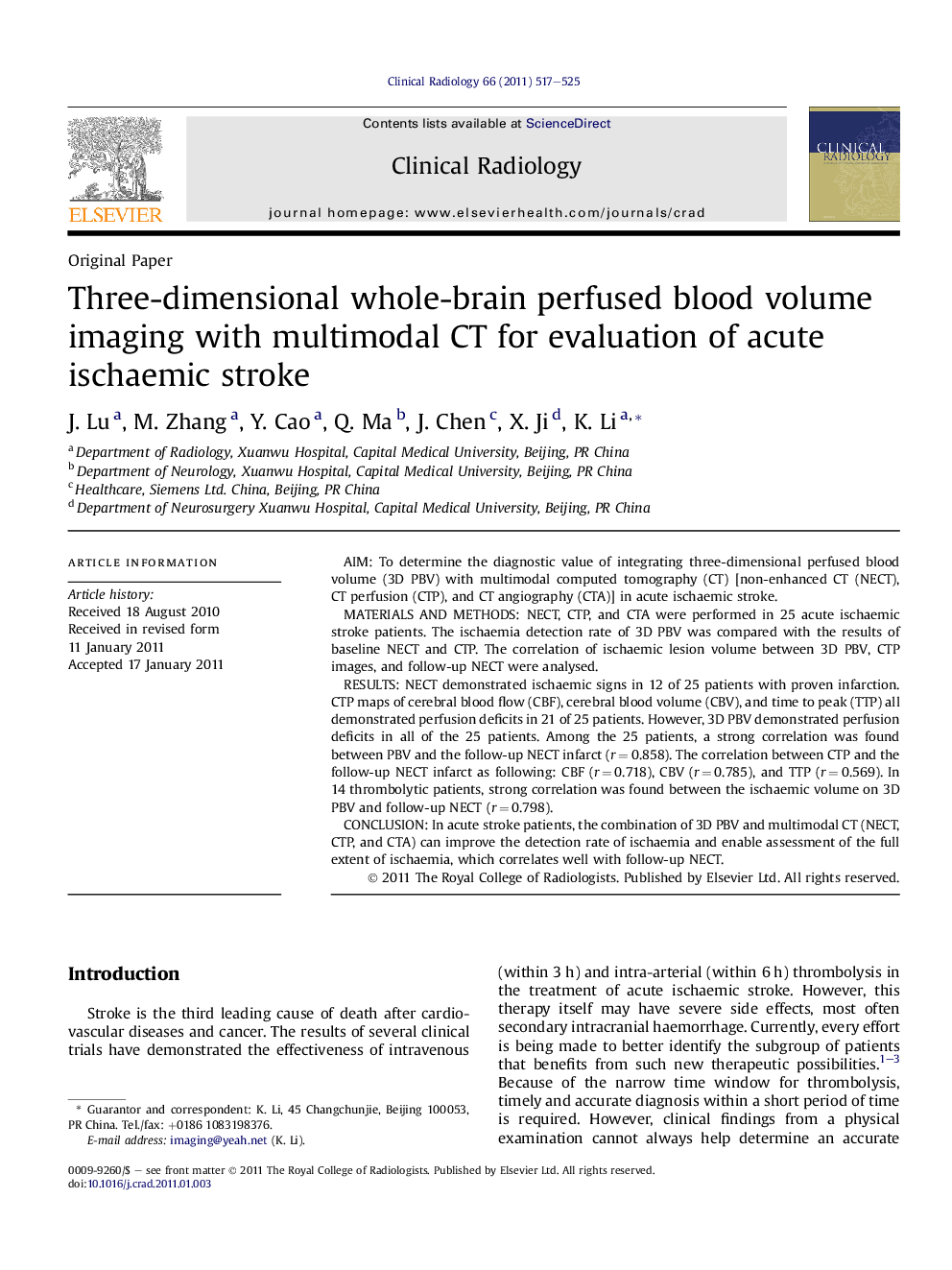| Article ID | Journal | Published Year | Pages | File Type |
|---|---|---|---|---|
| 3981947 | Clinical Radiology | 2011 | 9 Pages |
AimTo determine the diagnostic value of integrating three-dimensional perfused blood volume (3D PBV) with multimodal computed tomography (CT) [non-enhanced CT (NECT), CT perfusion (CTP), and CT angiography (CTA)] in acute ischaemic stroke.Materials and methodsNECT, CTP, and CTA were performed in 25 acute ischaemic stroke patients. The ischaemia detection rate of 3D PBV was compared with the results of baseline NECT and CTP. The correlation of ischaemic lesion volume between 3D PBV, CTP images, and follow-up NECT were analysed.ResultsNECT demonstrated ischaemic signs in 12 of 25 patients with proven infarction. CTP maps of cerebral blood flow (CBF), cerebral blood volume (CBV), and time to peak (TTP) all demonstrated perfusion deficits in 21 of 25 patients. However, 3D PBV demonstrated perfusion deficits in all of the 25 patients. Among the 25 patients, a strong correlation was found between PBV and the follow-up NECT infarct (r = 0.858). The correlation between CTP and the follow-up NECT infarct as following: CBF (r = 0.718), CBV (r = 0.785), and TTP (r = 0.569). In 14 thrombolytic patients, strong correlation was found between the ischaemic volume on 3D PBV and follow-up NECT (r = 0.798).ConclusionIn acute stroke patients, the combination of 3D PBV and multimodal CT (NECT, CTP, and CTA) can improve the detection rate of ischaemia and enable assessment of the full extent of ischaemia, which correlates well with follow-up NECT.
